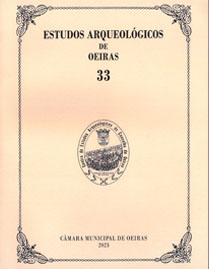O Complexo do Neolítico Final e do Calcolítico da Travessa das Dores/Rio Seco (Ajuda – Lisboa): resultados das escavações realizadas no sector do Rio Seco (2017/2018)
DOI: https://doi.org/10.5281/zenodo.10402467
Palavras-chave:
Rio Seco, Travessa das Dores, Lisbon, Late Neolithic, Chalcolithic, management prehistoric agricultural fieldsResumo
The results of the archaeological intervention of 2017 and 2018 in the Rio Seco sector (Ajuda, Lisbon) are presented. This sector corresponds to the rural space adjacent to the site of Travessa das Dores, already published.
The characteristics of the identified structures can be grouped into two main types: 1 - double facing walls, intended for the accumulation of previously dispersed loose stone and the division of land into agricultural plots; single-sided walls, or support walls, essentially intended to create terraces.
Both are characterized by remarkable continuity and linearity — considering the dimensions of the agricultural fields at the time - this being probably the first from prehistoric times that was identified in Portuguese territory.
The collection of a vast set of artefacts, associated with agricultural activities, namely the preparation of agricultural fields, is mostly attributed to contexts datable to the Late Neolithic and occasionally to the Chalcolithic, exactly the same situation that was identified at Travessa das Dores.
In this way, the two archaeological spaces, represented by Travessa das Dores and Rio Seco, appear to be mutually complementary, corresponding to a single polynucleated and polyfunctional archaeological complex, with the first space being intended for the storage of agricultural products produced in the second, by same community.
Downloads
Publicado
Como Citar
Edição
Secção
Licença
Os artigos publicados são da exclusiva responsabilidade dos Autores.
É expressamente proibida a reprodução de quaisquer imagens sobre as quais
existam direitos de autor sem o prévio consentimento dos signatários dos artigos
respectivos.




